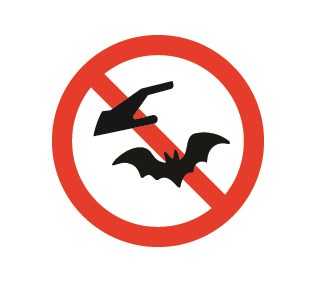
Less than 1% of bats in nature have rabies, but bats that act strangely or contact humans are up to 10 times more likely to have rabies. Humans can get rabies by exposure to bat saliva through a bite or scratch. Rabies is 100% preventable in humans with proper medical care, but it's almost always fatal if untreated. Rabies is fatal to bats, too.
If you see a dead bat or a bat that is behaving strangely, such as being aggressive, lying on the ground, flying near, or making contact with people, tell a park ranger right away, and do not touch it.
Rabies Prevention
- Enjoy wildlife from a distance. Do not touch or pet wild animals.
- Alert a park ranger if you see a sick or strangely acting animal. Do not approach it.
- Ensure housing and overnight dwellings (tents or cabins) are sealed off from the outdoors and that there are no small openings through which bats or other wildlife can enter. If this is not possible, sleeping under mosquito nets may prevent bats from contacting sleeping persons.
- Educate children about animals and rabies, as children are most at risk.
- Ensure your pets are up to date on vaccinations, especially for rabies, to protect them and your family.
- Talk to a medical provider about pre-exposure vaccination if you work with animals that could have rabies or are traveling to an area of the world where rabies is common.
Take Action if Exposed!
If you or someone nearby has contact with a bat, then you need to take action to prevent rabies.
Bats Help Maintain Healthy Ecosystems
Bats play a vital role in One Health, by helping to maintain healthy environments for other animals and people. Bats also rely on healthy environments and deserve our appreciation and protection. We're all linked in OneHealth.Discover the benefits of bats and how to help them thrive in our ecosystems.
Last updated: October 17, 2024
